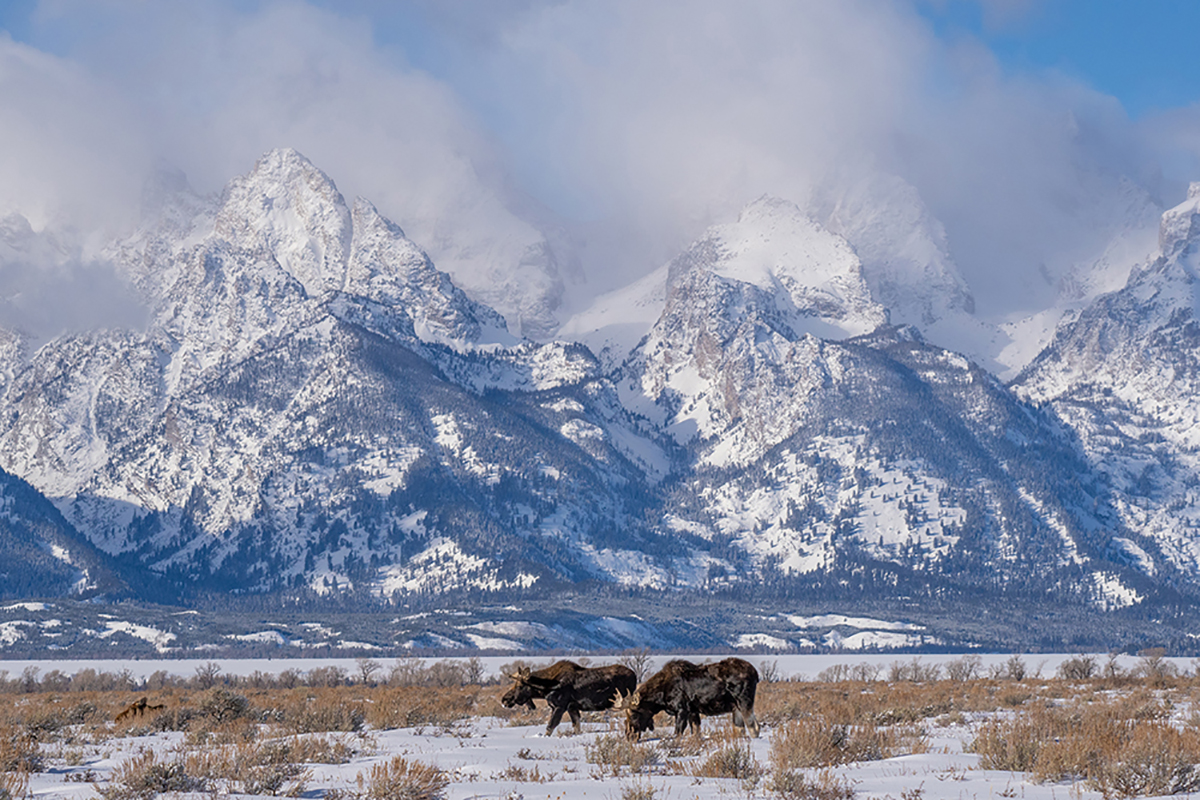Test-Drive in the Tetons
David Akoubian puts his new Tamron 17-70mm F/2.8 VC RXD through its paces in Wyoming, along with his 70-300mm Di III RXD telephoto zoom.
More Photo Tips | Video Gallery | Photo Gallery | Enewsletter sign-up
By Jenn Gidman
Images by David Akoubian
David Akoubian is no stranger to Grand Teton National Park, where he regularly holds seasonal photography workshops. But on his most recent trip to Wyoming, in addition to his Tamron 70-300mm Di III RXD telephoto zoom, David had a new lens to try out: the 17-70mm F/2.8 VC RXD zoom. “This lens is light and compact, and I was excited about the range on it—on a crop sensor, it’s the equivalent of 25.5mm to 105mm,” he says. “For me, that’s the perfect range for landscapes, especially in a place like the Tetons, where what you’re photographing is often farther away. Zooming in all the way allows you to bring everything closer. These two lenses together were the ideal combination for this trip.”
On one of his first days in the Tetons, David and his group photographed elk in the morning, then came across a group of seven moose, all bedded down. “We patiently waited, and eventually four of them got up and started walking around,” he says. “I didn’t zoom all the way in, however, because I wanted to try to capture as much of the mountains in the background as possible. It makes for an entirely different image when you can include as much of the wildlife’s environment as possible.”
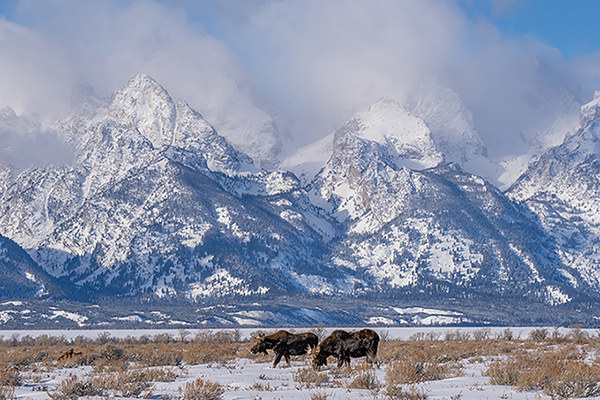
70-300mm (80mm), F/8, 1/3200th sec., ISO 800
Click image to view larger
David typically bases his workshops out of the Triangle X Ranch, but this year the ranch was closed due to COVID restrictions. “They still allowed us to brave the cold and come to take some pictures of elk and horses on the property,” he says. “A few of the wranglers there also wanted photos of themselves riding horses in the snow, so we all headed out, and I captured this photo of Ane riding Dollar. The snow in this photo was only about a foot deep, but by getting down low and zooming all the way in from a far-enough distance, I was able to compress the image enough so that when Ane and Dollar came up over the hill, the horse kicked the snow up and gave the appearance that the snow was more like 2 or 3 feet deep.”
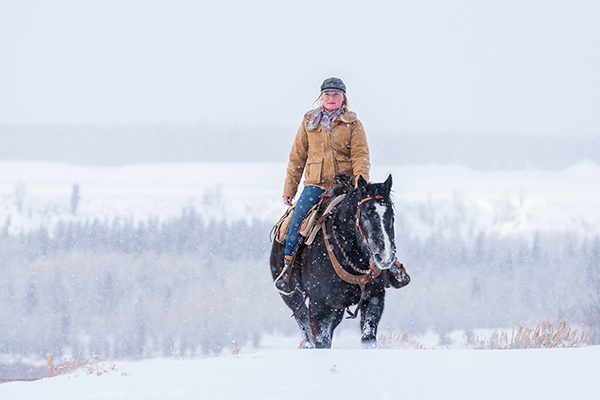
70-300mm (300mm), F/8, 1/800th sec., ISO 800
Click image to view larger
For several years, David has also been involved with Jackson Hole’s Teton Raptor Center, a nonprofit dedicated to conservation for birds of prey. On this visit, he was able to tour the center’s new facilities and spend about an hour taking photos during an educational session. “As they’re telling us about the birds, we’re photographing,” he explains.
David will usually stand about 10 to 12 feet away from the birds with his 70-300mm, though when photographing Gus, a golden eagle, he stood a little further away, as Gus was a bit nervous around people. “The beauty of this lens is how versatile it is,” David says. “I was shooting at about 80mm while standing a little closer to Hardeman the red-tailed hawk and Manzana the owl, but I was able to move back to take pictures of Gus by zooming in to 300mm. You can see in all three photos how sharp that lens is, showing all of the detail in the birds’ faces and feathers, no matter what focal length I’m using.”
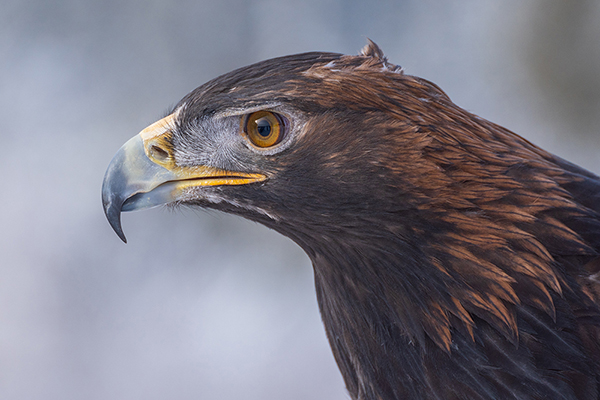
70-300mm (300mm), F/8, 1/500th sec., ISO 400
Click image to view larger
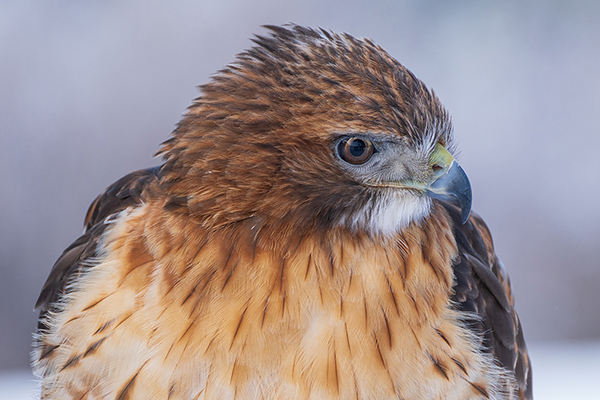
70-300mm (80mm), F/8, 1/500th sec., ISO 400
Click image to view larger
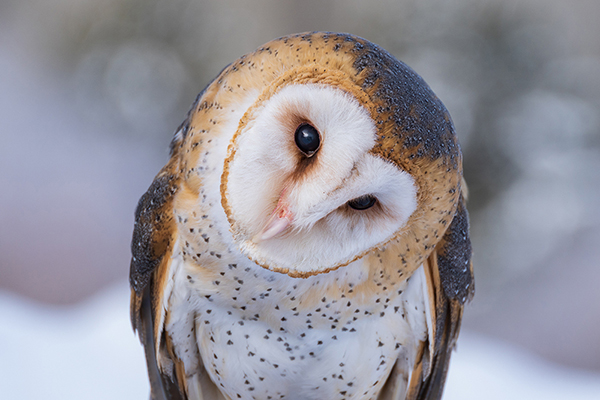
70-300mm (80mm), F/8, 1/500th sec., ISO 400
Click image to view larger
For a pair of images he took of the T.A. Moulton Barn—a historic barn located in the park’s Mormon Row and said to be one of the most photographed barns in the world—David broke out the 17-70mm and tried something different. “The photos you usually see of the barn are taken from a position a bit to the left of where I’m standing for the first picture,” he says. “That’s because from that perspective, the Tetons line up perfectly within the frame. But it was so foggy that morning you couldn’t see the peaks.”
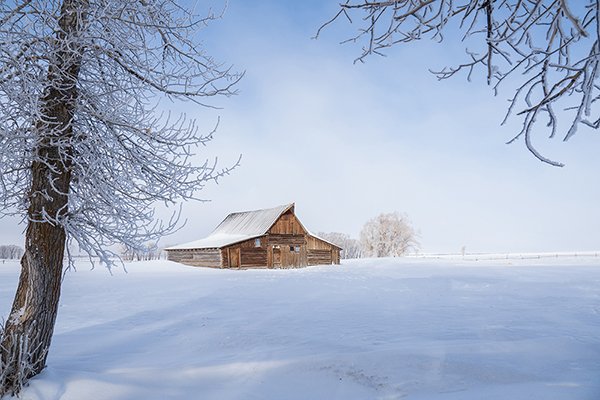
17-70mm (17mm), F/11, 1/80th sec., ISO 100
Click image to view larger
That’s when David opted to change up his angle. “I sought out other elements to place in the photo instead,” he says. “In this case, the fence line and bushes with the snow in the foreground provided that for me. It’s turned out to be one of my favorite photos I’ve ever taken there. The second shot you see here is of the barn taken from the usual vantage point, except because of the clouds, you can’t see the mountain range.”
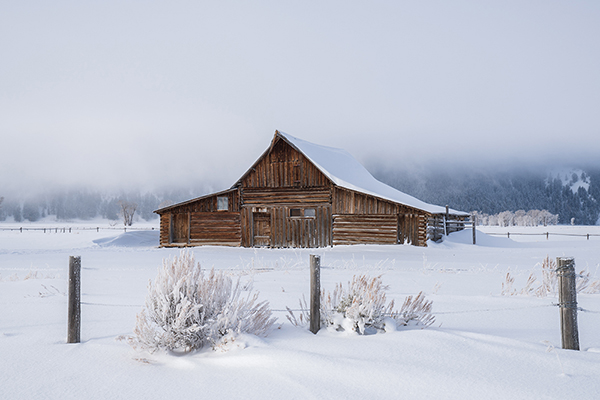
17-70mm (39mm), F/11, 1/100th sec., ISO 100
Click image to view larger
When you’re in the Tetons, you’d be remiss to head home without trying to capture at least one panoramic. “The image you see here is taken from the same general location where Ansel Adams took his famous Tetons and Snake River photo, except you can’t see the entire curve of the river due to all of the trees that have since grown in,” David says. “When you see images of this scene, you still can’t truly comprehend how massive that mountain range is. If you use a lens wide enough to capture the whole scene, however, the mountains will appear really small. So instead, I zoomed in to take vertical images with the 17-70, then stitched them together later into a panoramic. That helped me convey the majesty of the scene I truly saw before me.”
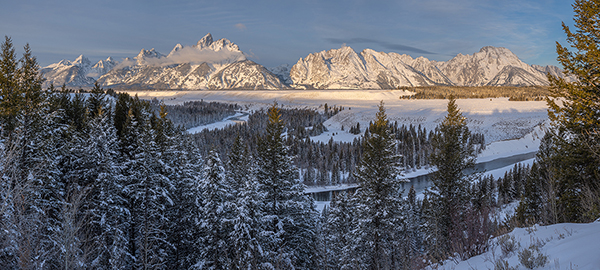
17-70mm (32mm), F/11, 1/50th sec., ISO 100
Click image to view larger
To see more of David Akoubian’s work, go to www.bearwoodsphotography.com or check out his Instagram.
More Photo Tips | Watch Videos | Learn More About Tamron Lenses | Photo Gallery
